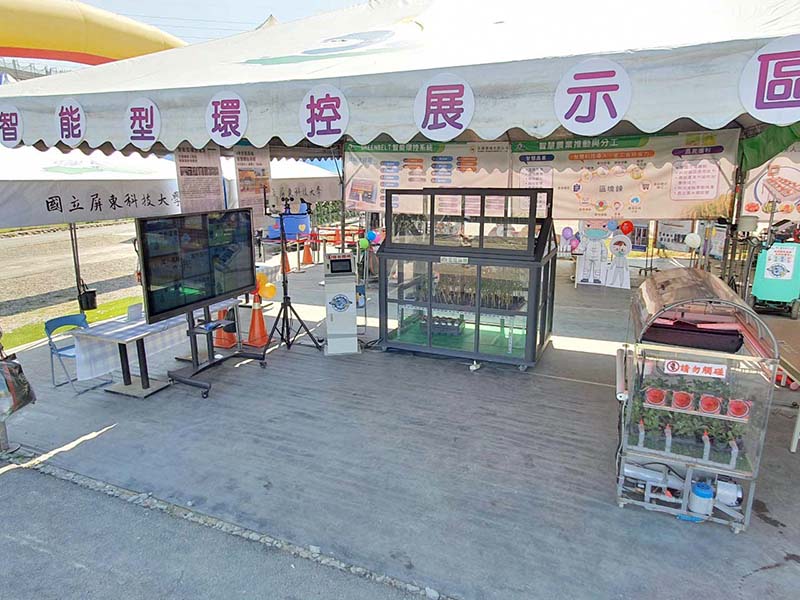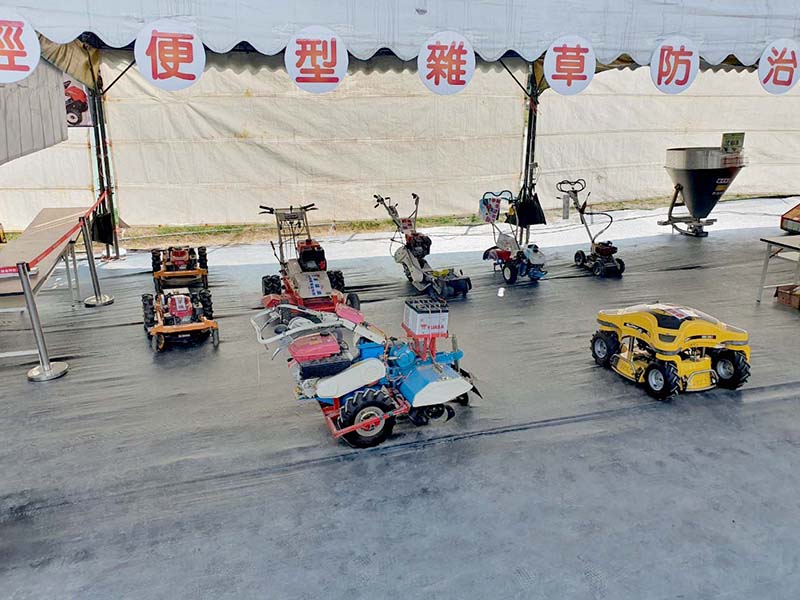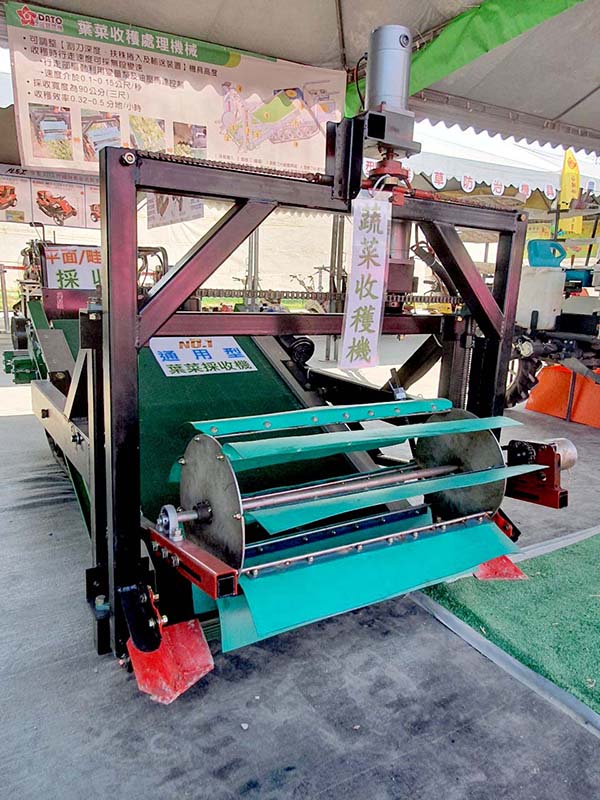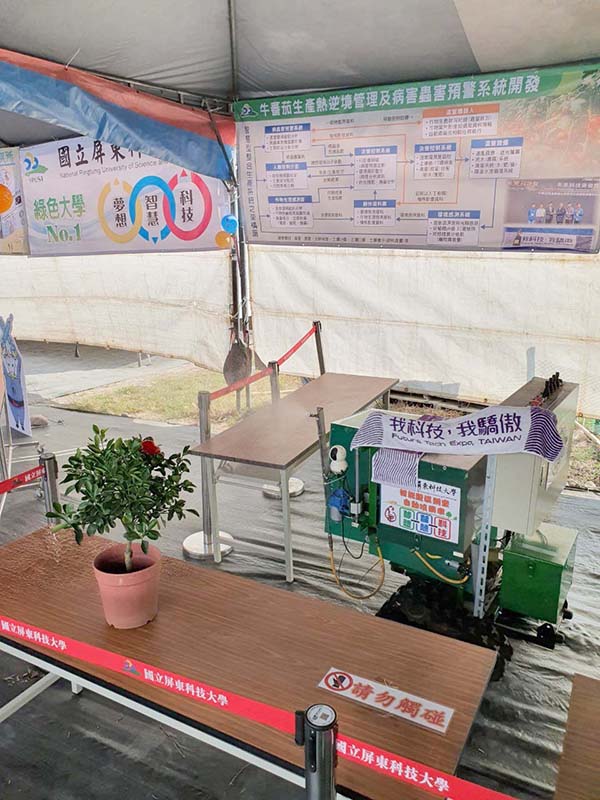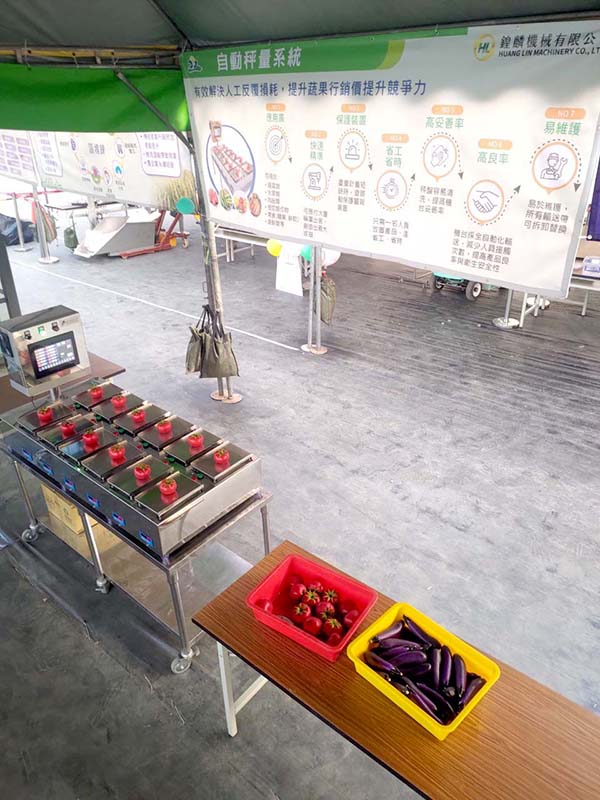Over the Spring Festival holidays, one of the most charming events in Southern Taiwan is the friendly and boisterous Pingtung Tropical Agriculture Expo. Bringing in people from around the country, the event gives visitors a chance to take a look at all sorts of agricultural products while taking in some of Pingtung’s warm winter sunshine. It also gives them a chance to see some of the new technology that is being developed to lighten the load of agriculturalists working out in the fields.
Students showing of the new inventions have been “dreaming of smart tech”. At the expo, researchers from the nearby National Pingtung University of Science and Technology (NPUST) show up each year to present some of the latest models of smart-tech farm equipment developed to make farm work easier and more efficient. This year, a self-propelled spraying vehicle designed to be used in netted gardens and greenhouses was out for viewing. Created by Assistant Professor Wei-cheng Chen of the Department of Biomechanical Engineering and Shuo-yu Tsai of the General Research Services Center, the invention was recently named a “future technology break-though” at the at the FUTEX, Future Techology Expo. The special piece of equipment was designed for easy operations in greenhouses and netted plots where pesticide or water spraying hardware have not been installed – and with the cooling effect of the water vapor, it can allow farmers in hot climates to grow beefsteak tomatoes year round.
Although life has been relatively normal in Taiwan, epidemic concerns have still been on the minds of many, which is why researchers from the university decided to share some of their work on animal vaccines. The lives of humans and animals are very-much interrelated; and at least 75% of emerging diseases come from animals. But when it comes to research on the subject, NPUST is where it is at. Over the years, with their international-caliber work on immunizations, the university has come to position itself as the national base for animal vaccine R&D talent cultivation. At the school’s “Animal Preparation Trial Mass Production Center” and “Innovative Biological Product Technical Service Center” students from around the world are being trained in the development of vaccine products for poultry and livestock. One of their prized achievements in this area, the “DNA Vaccine Technology Platform”, was presented at the expo.
For farmers out in the fields, declining birthrates in Taiwan has meant fewer helping hands. Lending its own hands to the problem, at the university, the old adage of “working smart, not hard” is being taking to new levels, and smart technology is being developed to “fill the gap” and “lighten the load”. To facilitate its smart agro-technology research, NPUST has established many centers for agricultural development. In cooperation with one another, the centers are conducting agricultural machinery training, promoting smart agriculture, building unmanned farm vehicles, and applying big data to scientific research and innovation.
At the exhibition area, labor-saving machines such as vegetable transplanters and leafy vegetable harvesters were presented as examples of the innovation taking place in the field. Assistant Professor Wei-cheng Chen has been working with the industry on other smart agricultural products as well, such as post-harvesting equipment. The packaging equipment can sort produce by weight and quantity— quickly and accurately assessing whether or not the product is in compliance with the packaging requirements, while also avoiding damage caused by repeated handling by personnel. When agricultural products are in surplus, vacuum dryers can be used for rapid drying without affecting the flavor or color of the product. Automatic follower vehicles, electric transporters, large remote control lawn mowers, and field cultivators are giving a whole new meaning to farm work. And with less time being spent on the hard labor end, more time can be spent focusing on the finer details of the products.



